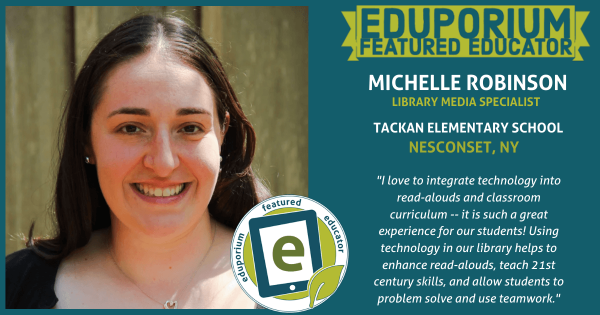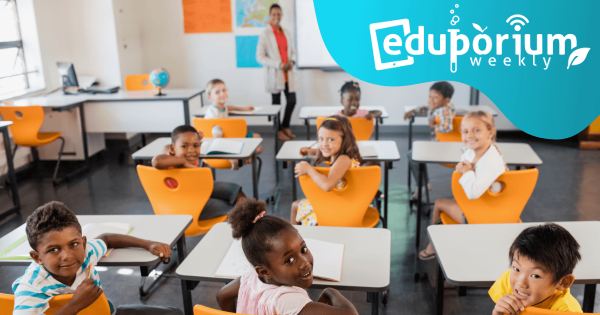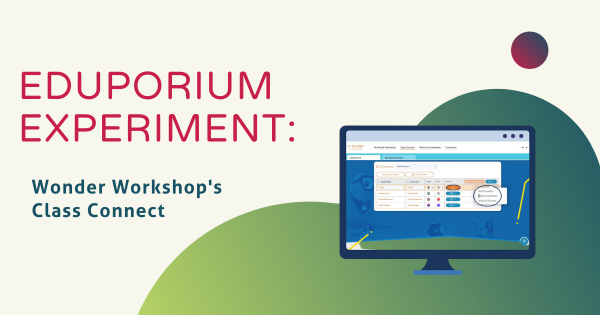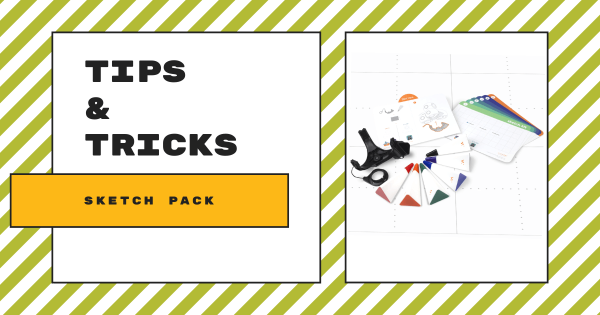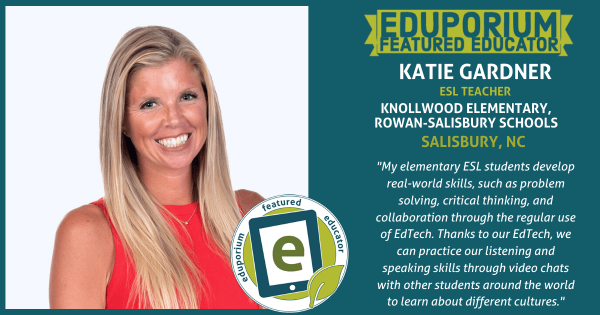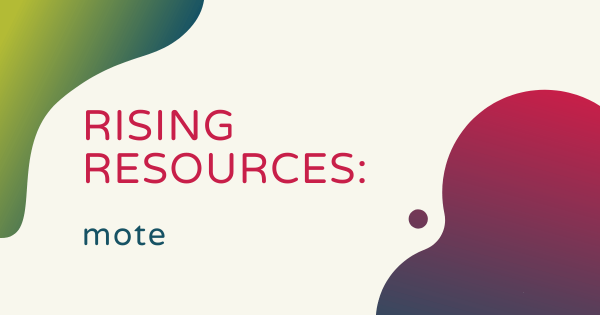Jorge Valenzuela has become an influential figure in STEM education with experience in both classroom and online teaching as well as higher education instruction. He worked in the Richmond Public Schools system for 10 years and helped build their Tech Ed program. In recent years, he’s shared his experiences, including in his book!
Andy Larmand
-
Eduporium Featured Educator: Michelle Robinson
This month, we hear from Michelle Robinson, who’s a library media specialist at the Tackan Elementary School. Michelle has used a bunch of different types of technologies with elementary students in the library. Whether it’s tangible STEM tools or digital creation platforms, Michelle has done a lot to provide students with real-world opportunities. -
April Grant Awarded to Gervais Schools' Creighton Helms
We have awarded our educational technology grant for the month of April to Creighton Helms of the Gervais School District. Creighton serves as the principal of the Gervais Elementary School in Gervais, OR and has really worked to create relevant STEAM learning opportunities for the students he supports. -
Eduporium Weekly | A Return to In-Person Learning
As the school year winds down, many students and teachers are experiencing some firsts. Some have been in the classroom all year, but others are getting their first taste of that return to normal in-person learning. In many cases, this even means students are meeting their teachers and classmates for the first time. -
Eduporium Weekly | PBL in Remote Learning
PBL involves students working as part of a group most of the time on a community-focused project designed to affect authentic change. You can see how this might be tough to do in a remote environment, but a lot of progress has been made. It takes true teamwork, but PBL IRL (in remote learning) is certainly a possibility. -
Eduporium Experiment | Wonder Workshop's Class Connect
The Dash and Dot Robots are a favorite among educators when it comes to coding in school. Since many students are no longer able to enjoy this, however, coding in remote learning has become the next best thing. Using the virtual Dash robot, which can be accessed through Class Connect, students are able to continue their coding from home! -
Tips & Tricks | Wonder Workshop Sketch Pack Accessories
The first and most obvious thing that’s great about the Sketch Pack is that it allows students to truly combine STEM and STEAM. It provides a surface and a few accessories to turn the Dash or Cue into a writing utensil. Students can slide a marker into the specialized slot and then write programs that tell the robot how to -
Eduporium Featured Educator: Katie Gardner
We’re excited to share our latest Eduporium Featured Educator interview! This month, we hear from Katie Gardner, who’s an elementary ESL teacher in the Rowan-Salisbury School System in North Carolina. Katie has found great benefits from integrating various types of technology in her instruction. She’s even tried using AR tools with her ESL students! -
Tips & Tricks | Robo Wunderkind + Coding Apps
The Robo Wunderkind line allows early education students to get hands-on with building and programming robots. Designed for kids as young as five years old, each of the three kits feature constructible components for building robots. Once they build the robot they want, kids can program them using one of three mobile apps. -
Rising Resources | mote for Student Feedback
In the remote learning era, however, providing students with actionable feedback has become tougher. That’s how mote can help. A simple Chrome extension, mote empowers teachers to provide students with personalized feedback and save themselves a ton of time in the process. So, why is mote so efficient and great for 21st century education.




